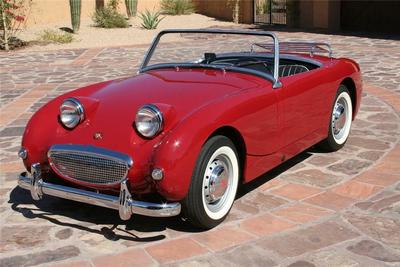HISTORY: AUTO LOOK-ALIKES
Originally Published June 1996
by Bob Hagin
June 14, 1996
It's said that all of us have a twin somewhere in this world and the same is true of automobiles. Recently I was pursuing the pages of The New Encyclopedia of Motorcars (my favorite book) and was struck by the fact that the '39 Renault Grand Sport was a dead ringer for the '37 Lincoln Zephyr, the '45 Russian-built Ziv is a perfect knock-off of the '41 Packard Super 8, and the '55 Volvo 444 is a small '48 Ford sedan.
Then it occurred to me that in my own auto experiences I've come across several vehicles that have near-twins of there own. These are the ones that come to mind and their look-alikes:
'36 CORD/'40 HUPPMOBILE - In its day, the classic '36 front-drive Cord 810 was as different from its contemporaries as a modern jet is from a biplane. The body was a unit construction and its V8 engine/ transmission/differential was mounted on a separate sub-frame. The huge pontoon fenders were almost as high as the body and its "coffin-nose" hood didn't even mount a conventional grille. Unfortunately Cord went broke in '37 but the body was to beautiful to waste. Huppmobile (a company also in trouble) bought the dies, began to make Cord look-alikes with only slight changes to the front end. Huppmobile mounted them on conventional frames with rear-drive, used a front-mounted six cylinder engine and called it the Skylark. Huppmobile went down too and stopped making Skylarks in '40. The last of were built along with an identical car, the Graham Hollywood. A record: three cars with one body.
'49 CROSLEY HOTSHOT/'58 AUSTIN-HEALEY SPRITE - In '48, Powell Crosley was quick to see the coming American sports car movement and wrapped his tiny (44 cubic inch) sedan in an open two-seater body that was so stark that it didn't even have doors. Its envelope body was mud-ugly and its quality was less than sparkling but it could hit 85 MPH and handled like a go-kart. It was a small fish in a big-horsepower pond and after selling around 2500 of them, Powell went out of the car business in '52. Its look-alike, the '58 British Austin-Healey Sprite, was everything the Crosley wasn't. Slightly larger, more sophisticated mechanically and offering better weather protection, nearly 50,000 examples of that first Sprite were sold.
'34 DESOTO AIRFLOW/'36 VOLVO PV 36 - The like its big-brother from Chrysler, the DeSoto Airflow was aerodynamically miles ahead of others of its age. It had a unit body and frame, built-in headlamps, hydraulic brakes, carried three across on its front seat and offered unparalleled comfort for driver and passengers. Its flat-head six cylinder engine was so reliable that it continued to be enlarged and used in its stablemate Dodges and Plymouths until 1959. Unfortunately the styling was a total flop and the Airflow design became an historical sidebar in '37. But the canny Swedes over at Volvo seemed to like it and its '36 PV 36 is a dead-ringer for the DeSoto Airflow right down to using a flat-head six cylinder engine.
'81 FIAT STRADA/'85 YUGO GV - The Fiat company skedaddled from these shores in '82, a few steps ahead of the Environmental Protection Agency and the Department of Transportation. Along with it went its little front-drive transverse-engined Strada hatchback. Fiats rusted while sitting on the pier and eventually Fiat had to buy a hoard of them back from those dealers as well as private owners. I was amazed that the little Fiat was back in '85 with all its faults - and there were plenty. Only now it carried a logo that said "Yugo." It didn't fair any better than its Fiat look-alike but its fate sealed when its native country, Yugoslavia, broke apart and was engulfed in civil war. A boat load of them was left in warehouses but the bankruptcy court finally found homes for them albeit at considerably less than their original $3995 MSRP.
'62 LOTUS ELAN/'90 MAZDA MIATA - The Lotus Elan was a classic. A small British sports car that was nimble, fast, good looking and above all, "civilized". It didn't beat its passengers and its 1.6 liter twin- cam engine was a joy to behold. But like all good cars, its maker tried to make it better by making it bigger and it didn't work. Lotus didn't make many of the original Elan roadster and so American sports car aficionados were delighted when Mazda presented its delightful little Miata in '90. It's a two-placed sports car that is also nimble, fast, good looking and its 1.6 liter twin-cam engine is a joy to behold. The guys at Mazda's Southern California design studio are also Lotus aficionados and the definitely hit the mark.
But today, things are different. Thanks to the "jelly-bean" school of design, they all look alike.




